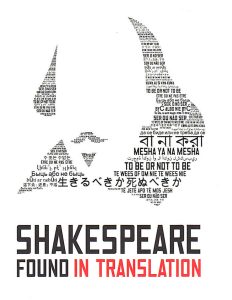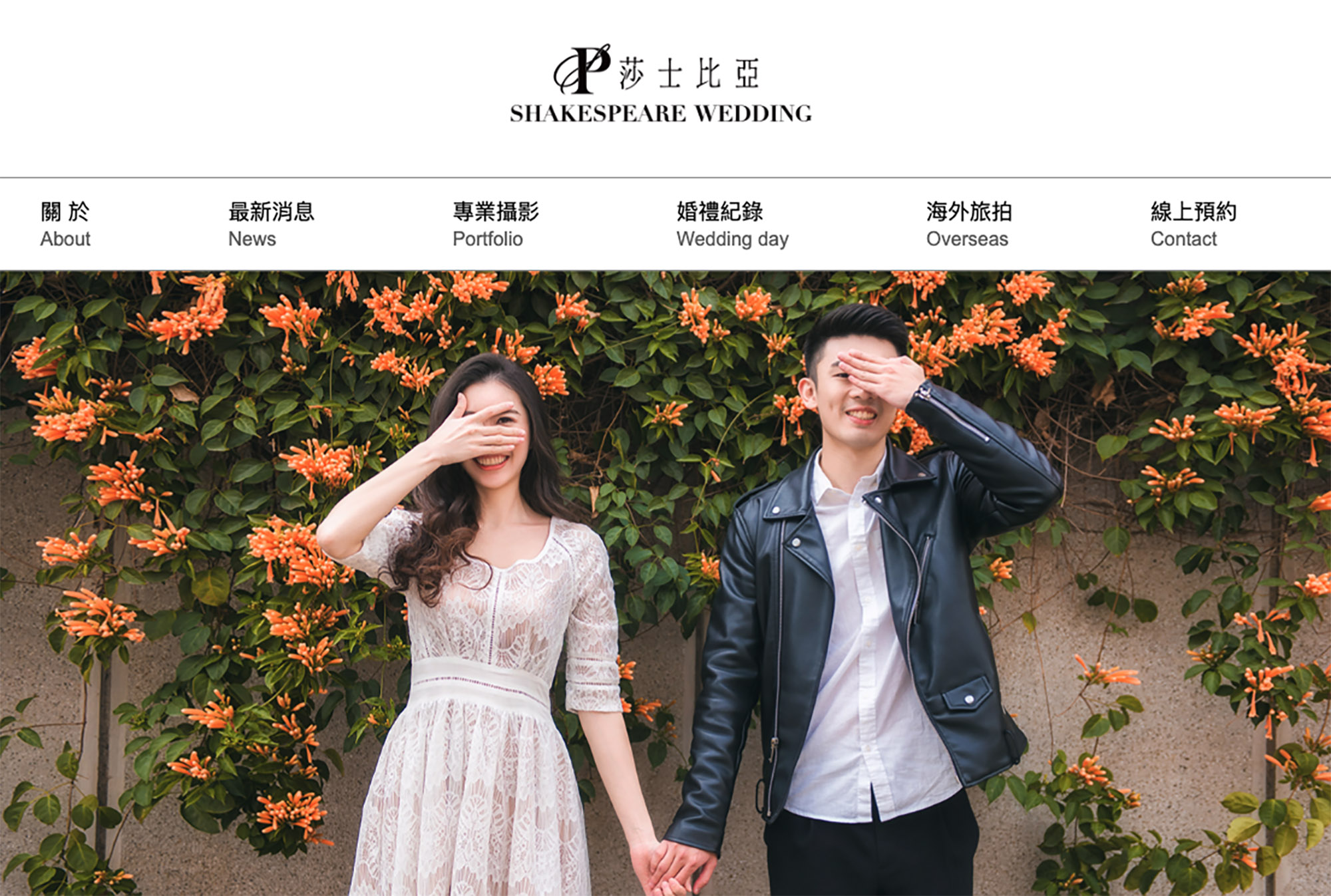Global Shakespeare is a myth. It is a myth that moves the world and moves around the globe. Shakespeare is one of the most frequently mythologized, translated, and performed secular figures. Having achieved a mythical status, Shakespeare’s plays have generated other myths about contemporary culture. These myths have been jointly created by educators, scholars, practitioners, administrators, funders, artists, spectators, and readers. Shakespeare’s name itself has been used to signify high culture.
David Garrick’s Shakespeare Jubilee in 1769 effectively launched bardolatry as a cult. From Voodoo Macbeth (by Orson Welles) to the heir apparent of the Denmark Corporation in Manhattan (film adaptation of Hamlet by Michael Almereyda), Shakespeare’s characters and themes have been reinvented in a wide range of cultural contexts. Over the past centuries, stage, film, and television adaptations of Shakespeare have emerged in the UK, US, Canada, Europe, the Middle East, Asia and Asia/Pacific, Africa, Latin America, Russia, Australia, New Zealand, and far-flung corners of the globe.
Shakespeare and its global afterlife have formed a tautology: Shakespeare is believed to be universal, which is why the canon has gone global; on the other hand, global Shakespeare is seen as evidence of Shakespeare’s universality. The myth of universality is built upon the assumption of consistent meanings of the same story to different cultures, an assumption that the plays are always locally relevant in the same way in aesthetic, moral, and political terms.
 The idea of universality is often backed by statistics (as many things do now) and not simply literary merits. During the 2012 London Olympics opening ceremony, Kenneth Branagh, playing the nineteenth-century industrialist Isambard Kingdom Brunel, delivered Caliban’s eloquent description to newcomers of his world, an “isle full of noises.” In November 2012, the International Olympics Committee claimed that the ceremony reached an estimated 4.8 billion viewers and listeners in more than 200 countries and territories. As part of the Cultural Olympiad, the 2012 World Shakespeare Festival featured 69 international productions, 263 amateur shows, 28 digital commissions and films throughout the UK. The Royal Shakespeare Company, the principal organizer, claimed that the festival reached “more than 1.8 million people,” according to the Royal Shakespeare Company’s website in 2016.
The idea of universality is often backed by statistics (as many things do now) and not simply literary merits. During the 2012 London Olympics opening ceremony, Kenneth Branagh, playing the nineteenth-century industrialist Isambard Kingdom Brunel, delivered Caliban’s eloquent description to newcomers of his world, an “isle full of noises.” In November 2012, the International Olympics Committee claimed that the ceremony reached an estimated 4.8 billion viewers and listeners in more than 200 countries and territories. As part of the Cultural Olympiad, the 2012 World Shakespeare Festival featured 69 international productions, 263 amateur shows, 28 digital commissions and films throughout the UK. The Royal Shakespeare Company, the principal organizer, claimed that the festival reached “more than 1.8 million people,” according to the Royal Shakespeare Company’s website in 2016.
Further, Shakespeare is associated with select historical sites and sites of origin, such as Shakespeare’s Globe Theatre in London and the “Hamlet” castle, Elsinore, in Denmark. His works are often seen as universally valid and locally relevant in aesthetic, moral and political terms. Even though it is not the only venue associated with the playwright, the Globe in London has generated many of the ideas and tropes about Shakespeare’s universal appeal.

The fascination with the figure of the globe has extended from early modern to modern times. For example, the earth featured prominently in the 2012 World Shakespeare Festival’s publicity material. Its logo, for example, was the earth seen from over the North Atlantic, showing Britain nearest the center of the world. A promotional trailer began with a low orbit shot at sunrise. The curvature of the earth looms large as tagline fades in: “The biggest celebration of Shakespeare starts now.” These images are suggestive of an infinitely mobile Shakespeare in orbit, signifying across geographic spaces and capturing the human conditions on Earth.
Having achieved a mythical status, Shakespeare’s plays have generated other myths about contemporary culture. These myths have been jointly created by educators, scholars, practitioners, administrators, funders, artists, spectators, and readers. Shakespeare’s name itself has been used to signify high culture.
In Taiwan, there is a luxury apartment complex named after Shakespeare in Taipei, and a bridal shop named “Shakespeare” promises happy couples quality photoshoots in Tainan. In Beijing, an English language school is named Shakespeare, with “to be or not to be” as their slogan.
There are also bridal shops and wedding services throughout East Asia named Shakespeare. In Anglophone countries, politicians quote Shakespeare as if it is a gentleman’s calling card.
A large part of this phenomenon is driven by the forces of the market economy. There are self-syndicated authentic venues (the London Globe as a reconstructed historical site and Elsinore as Hamlet’s castle). There are also theatrical spaces where Shakespeare’s aura is manufactured and consumed. Stratford-upon-Avon represents a historically authentic venue baptized by a Shakespearean presence that fuels the fantasy of origin. The concept of locality encompasses a number of related ideas, including the setting of a drama, the city and venue of a performance, the cultural coordinates of the audience, and all the meanings derived from these physical and allegorical sites.
These localities shape the myths of Shakespeare and Shakespeare’s extensive posthumous encounters with the world, which is why Shakespeare and its myths have occupied an international space for centuries. Representations–theatrical or otherwise–signify relationally, and each locality is further constructed by interactions between local histories embedded in and superimposed on the performances of Shakespearean myths. The myth is sustained by the proliferation of global performances, and global performances are made possible by the reinforced myth.
The myth of Shakespeare as global currency has turned global Shakespeare into a business model that reinforces the idea of Shakespeare as a world heritage that connects disparate local cultures. This idea is connected to the myth that Shakespeare is everywhere in all localities. As Stephen Greenblatt points out in the Introduction to the third edition of Norton Shakespeare, the most astonishing feature of the Shakespeare phenomenon is his “virtual universal appeal.” He may be local in England, but he is universally worshiped elsewhere.
In the twenty first century, as Shakespeare’s worldwide presence has become more visible, the myth of his universality has been reinforced by the wealth of intercultural appropriations of his works. The myth is sustained by the proliferation of global performances, and global performances are made possible by the reinforced myth.
Interestingly, the desire for a globalized Shakespeare is so strong that a forgery has emerged in the nineteenth century that has been propagated through recent performance histories, namely the myth that Captain William Keeling arranged a performance of Hamlet in 1607 on board the Red Dragon off the coast of Sierra Leone, which has been exposed as a hoax. Enthusiasts of Shakespeare may very much want the anecdote to be true, as it encapsulates a dreamscape in which Shakespeare is making a difference. The blind spot of this myth is that, despite the feel-good factor, we must problematize the homogenizing tendency to use global Shakespeares as a de facto liberatory tool.
Global Shakespeare has also gone local as part of diasporic communities. Diasporic Shakespeare—performances by minority artists—is distinctive from national, international, and touring Shakespeares. Diasporic Shakespearean performances represent the lived experiences of people in diasporic communities, such as people of African and Asian decants living in the UK, British expatriates in Hong Kong, Americans living in Beijing (e.g., Cheeky Monkey Company), African-American theatre, and so on. Diasporic Shakespeares are designed for heterogeneous communities and incorporate elements from several cultures, as evidenced by works by British Indian, Asian American, Chinese Singaporean, Québécois (Francophone Canadian), and African and Caribbean Canadian artists.
It is one thing to do Shakespeare while “brown” when performing in India, where the actor is not part of a minority. It is quite another to do Shakespeare while Asian in England (such as Yellow Earth Theatre’s Mandarin-English bilingual King Lear in Stratford-upon-Avon) or in the US (such as Young Jean Lee’s Lear, Soho Rep, New York, 2010) where classic theatre is assumed to be aligned with some versions of upper-middle class white masculine culture.
For instance, the Oregon Shakespeare Festival’s The Winter’s Tale (2016), directed by Desdemona Chiang, provided remedies in the form of social justice and inclusiveness. This rare Asian American production featured an Asian American cast and alternated the settings of premodern China and America’s Old West to create a remedial, culturally hybrid space. In the Director Interview, Chiang said in unambiguous terms that, with this production, she finally had “a sense of ownership over the [Shakespeare] material” which is “a very validating thing” when American theatre is dominated by “Eurocentric and Western perspectives.” The risk of tokenizing Asian Americans aside, said Chiang, the production “is a sign of solidarity and support.”
One example of cultural hybridity was this production’s stylized presentation of “exit, pursued by a bear.” Upon arriving in Bohemia, Antigonus encounters what appears to be a large, brown rock center stage. A series of lightning flashes shows, first, the face of a bear, followed by its claws, and eventually body. The rock turns around and reveals itself to be a bear in the form of a Bunraku-style puppet. One puppeteer can be seen driving the bear’s head while two other puppeteers are in charge of each of the bear’s front limbs. The bear devours Antigonus, who “exits” through its mouth. This is a remarkable transition from the tragic mood in the first half of the play to the comic pastoral mode in the second half. This creative decision is hybrid both generically and culturally, redressing not only the tragic suffering of the play’s first half but also Shakespeare’s western, Anglo canonical exclusivity.
Race is an uncomfortable but important topic in our age of globalization. In the art and entertainment industry, race is both visible and invisible in various forms of embodiment. After all, actors embody various characters and stories on stage and on screen, drawing attention to, or away from, race and ethnicity. For minority actors, identity politics can be a double-edged sword. Black British actors are often associated with art forms that are considered ethnically authentic and “matching” their perceived identity and interest, such as jazz. Indian-British actors are lined up with Bollywood routines. For artists who thrive to transcend the racial line, they face the seemingly impossible choice of heeding the call for cultural assimilation and “preserving” ethnic cultural roots.
On one hand, “ethnic” plays can make visible the racial issues that have been ignored, such as British-Korean playwright In-Sook Chappell’s P’yonyang (2016), a love story of two North Korean childhood sweethearts.
On the other hand, the last thing BAME actors want is to be pigeonholed and shoehorned into an ethnic ghetto where they are expected to only appear in such plays. It is both aesthetically and politically important to see, for example, Sophie Okonedo, playing Queen Margaret in BBC’s The Hollow Crown (2016), and The Black Macbeth (directed and adapted by Peter Coe, Roundhouse, 1972. Diverse casting is the key. To learn more, visit the British Black and Asian Shakespeare Performance Database.
At this juncture, we must ask: Is multiculturalism a problem to be solved or an opportunity to be seized? As British actor Danny Lee Wynter points out:
The white able-bodied experience is one which is celebrated in every postcode of the capital and if you’re not that the climb feels insurmountable.
Other artists fight back with their unique aesthetics, approaches, and distinct praxis. British-Kenyan director Jatinder Verma, Artistic Director of the Asian theatre company Tara Arts, uses the term “Binglish” (i.e., the theatre praxis of featuring Asian or black casts in productions by independent Asian or black theatre companies) to challenge the “dominant conventions of the English stage.” In April 2015, Tara Arts produced its adaptation of Macbeth set in a migrant Asian family and explore their “ancestral (and spiritual) homeland.” Verma deliberately avoided picking an “Asian” play. Instead, Tara Arts wanted to give black and Asian actors an opportunity to do Shakespeare.
These “locally grown” global Shakespeares—a new trend—are helping to combat the various myths of Shakespeare and classical theatre. The ultimate goal for minority artists, and global Shakespeare, is to transcend the label of a postcolonial subject or a perpetual other. Meanwhile, their creative blending of their projected (or perceived) cultural identity and visible and invisible embodiment (as they may choose to do so) continues to enrich Shakespeare and global performance cultures.
=======================
Alexa Alice Joubin is the founding co-editor of the MIT Global Shakespeares and a professor at George Washington University. Her latest book is Contemporary Readings in Global Performances of Shakespeare (Arden Bloomsbury, 2024).







